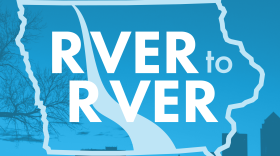Through a partnership with Polk County Emergency Management, researchers at Iowa State University are developing an online game to help train emergency managers respond more effectively in times of disaster.
Citing a gap in the market for severe weather emergency training games, the team seeks to make an engaging, immersive and flexible tool emergency trainers can use across departments.
The game is meant for training members of public safety agencies. It forces players to make critical resource and communication decisions in the aftermath of a disaster in an urban area as members of emergency response teams.
Cameron MacKenzie, an associate professor in the industrial and manufacturing systems engineering department at ISU, leads the team behind the grant-funded project. The team is made up of a handful of engineers and an English professor specializing in generative artificial intelligence.
MacKenzie said the purpose of the game to help participants understand the roles and responsibilities of different agencies, build decision-making skills and learn how to collaborate effectively with other departments. He compared the game's structure to the "Choose Your Own Adventure" book series.
"They're kind of doing a 'Choose Your Own Adventure' because they have different decisions, and based on their decisions, that influences how the game unfolds and develops," he explained.
According to a project summary, the game is supposed to make players "grapple with the uncertainty and trade-offs in their actions."
In the multiplayer game, a derecho rolls in on a busy farmer's market in an urban area. Lightning strikes and high-speed winds blow in, sending trees falling and people running. Players are then faced with a slew of decisions, such as where to dispatch ambulances, how to distribute personnel and how to effectively communicate with other members of emergency departments.
The game uses generative AI videos and audio for certain scenes, like when the derecho hits, but the whole game isn't AI-generated, according to MacKenzie.
The game has a virtual environment, like other video games, but periodically players watch short 30 second to minute-long videos that were made using AI tools.
Brett McIntyre, a program assistant with Polk County Emergency Management, said the game provides a more interactive type of training compared to the simple, tabletop exercises the department typically does.
"It's a great tool because it can be set up very quickly and there's not really much of a cost to it," he said. "Once you have the game, once you have the software developed, you can use it over and over again."
McIntyre said the game can help find any gaps in a community's emergency plans.
"They're not quizzes or trying to grade an individual on how well they know it," he said. "We want to really kind of put the plan to the test and stress test that side of it, so we can figure out what is it that we've missed when we've sat down to come up with these plans?"
Inside the game and the eye of the storm
MacKenzie said the game will have four to six players and take around 30-45 minutes to complete.
When the game starts, players will see a map of the farmer's market with locations of people and stalls. They'll receive a warning that a derecho is supposed to hit in 10 minutes. Then they will face different choices depending on their roles.
"If you're playing the police and maybe you have a few units on scene, do you send them to particular places? Do you quickly try to warn the people to take shelter?" MacKenzie explained.
After the derecho hits, players are prompted with a variety of questions like how many ambulances to dispatch and where, or whether to set up an incident command center to coordinate across departments. They also receive audio feeds and text feeds of reports from a 911 dispatch of surrounding situations they have to respond to.
"Also at this point, hopefully you're recognizing that, 'Oh, I need to cooperate and collaborate with the other people who are playing the game,'" MacKenzie said.
And, there's curveballs. While sending an ambulance to a group of injured people, a player might find the road blocked with debris and have to decide whether to reroute or call another department to clear the road.
After the situation is stabilized, MacKenzie said the team wants to integrate a 'hot wash' debriefing session, where a training facilitator can walk participants back through the game to review their decisions.
Mackenzie said the team is also exploring using a scoring system to reward good choices and punish bad ones — like dispatching all ambulances to one location without coordinating with other departments.
While planning the project and conducting interviews with emergency personnel, MacKenzie said his team found a lack of games on the market focused on training emergency responders in severe weather events.
A gap in the market means opportunity to invent
However, originally, MacKenzie said he got the idea while working on another project with Polk County Emergency Management.
"The county Emergency Manager A.J. Mumm said something along the lines of, 'Wouldn't it be great if we could have a fun and exciting video game that would really engage our participants and help them learn and understand better what to do when it comes to responding to disasters?'" he recalled. "So, that's more or less the overall goal."
MacKenzie said emergency managers wanted a training that was easier to conduct logistically. McIntyre agreed.
While Polk County Emergency Management does some immersive, in-person trainings, McIntyre said they are often costly to execute and "extremely time consuming to plan" — sometimes taking up to 18 months to coordinate. Being able to play the game remotely will make it easier to coordinate trainings across different departments.
Future development and training options
The team has a year to deliver a prototype working version of the game, per the $700,000 National Science Foundation grant they received through the foundation's Civic Innovation Challenge Program.
After that, the team wants to "sustain and scale" the game by adding different types of weather events and geographic settings or by adding a feature that will let training facilitators adjust the difficulty level of the game, such as by limiting resources.
McIntyre called the current plan for the game "a good starting point."
"If we're able to expand this to beyond just one scenario, to things that can be kind of customized ... and [to] test different plans, it's just another tool that we can have in our toolbox and [use to] create some variety as we try to train and keep people up to speed," he said.





